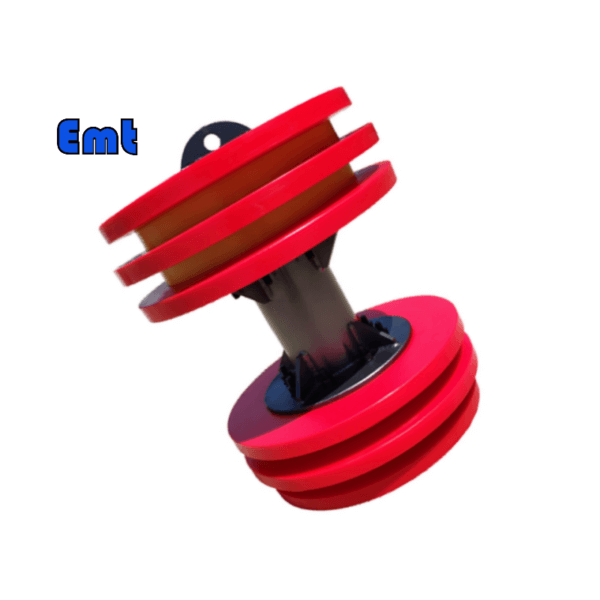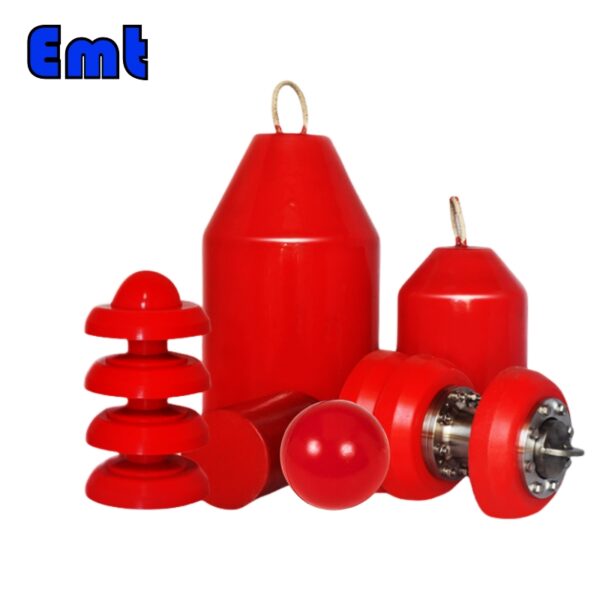Description
Introduction
Polly Pigs are a type of pipeline pig widely used in the pipeline industry for various maintenance and operational tasks. Named for their polyurethane construction, Polly Pigs are designed to traverse pipelines for purposes such as cleaning, inspecting for damage, and segregating different products within the pipeline. Depending on their use, they can have different forms, such as bare, wire brush coated, or equipped with abrasive straps. Their flexible and robust construction makes them suitable for pipelines of various sizes and conditions. As a result, Polly Pigs have become indispensable tools in ensuring the efficiency, safety, and longevity of pipeline systems worldwide.
Detailed Description of Polly Pigs
- Polly Pig Characteristics: Sizes, Materials, and Variability
Polly Pigs, named after its major building material, polyurethane, is a type of pipeline pig that is widely utilized in a variety of pipeline operations. They are available in a range of sizes to handle different pipeline diameters, from little to fairly large, and their colors may vary depending on the manufacturer or the specific application for which they are built. The density of the polyurethane used to make them can also be different. Higher-density pigs are used for tasks that need to be cleaned more thoroughly or sealed better. - Polly Pigs’ Unusual Versatility and Adaptability in Pipeline Operations
Polly Pigs are distinguished by their adaptability. They can be basic and smooth for mild washing and drying operations, or they can be outfitted with extra components such as wire brushes or abrasive straps for more intensive cleaning needs. They are more flexible than other varieties of pigs and can easily navigate curves and variations in pipeline diameter. - Polly Pigs vs. Skeletal Cleaning Pigs: A Comparison
Skeletal cleaning pigs, another frequent type of pipeline pig, often have a steel body frame and replaceable brushes or scrapers. They are frequently utilized for more intensive cleaning activities when large deposits must be removed from pipeline walls. However, because they are made of steel, they may not be as flexible as Polly Pigs and may be less suited for pipelines with tight bends or considerable diameter variations. The decision between Polly Pigs and skeletal cleaning pigs is often determined by the pipeline operation’s specific requirements.
Why Choose Polyurethane as the Material?
Polyurethane, the primary material used in the construction of Polly Pigs, has several advantages. Its robust nature allows it to withstand the harsh conditions inside pipelines, including high pressures, varying temperatures, and corrosive substances, ensuring the pig remains durable and resistant to wear and tear throughout its journey. TPolyurethane’s inherent flexibility is crucial for a device that must traverse through pipelines of varied diameters, bends, and turns, allowing the pig to keep consistent contact with the pipeline walls for effective cleaning, inspection, or separation activities. Furthermore, the versatility of polyurethane allows for the creation of pigs with varying degrees of hardness, catering to a broad range of applications, from light cleaning or drying to more aggressive cleaning or scraping tasks. Furthermore, polyurethane is a relatively cheap material, making it an economical solution for producing disposable pigs that are not retrieved after usage. Polyurethane is a suitable material for pipeline pigs due to its combination of durability, elasticity, versatility, and cost-effectiveness.
Basic Parameters
| Name | Polly Foam Pig |
| Performance | 1. The interior is foamed with polyurethane. A polyurethane elastomer coating is applied to the surface. |
| 2. It is flexible and has wear resistance. | |
| 3. The deformation amount can reach 50%, which is the most widely used foam pig. | |
| 4. It is utilized in pipe washing, descaling, and fluid isolation. | |
| Technical Parameters | Staring pressure: 0.02 MPa |
| Density: 35kg/m³-220kg/m³ | |
| With Pressure: 7MPa | |
| Compression ratio: 50 | |
| Attrition rate: 2mm/100km | |
| Operating temperature: -30°C to +100°C | |
| Stretch rate: 320% | |
| Flex life: 50,000 times | |
| Operating distance: 100 km–300 km |
Frequently Asked Questions
1. How are Polly Pigs introduced into and retrieved from pipelines?
Polly Pigs are introduced into pipelines through a launcher, a specialized piece of equipment that allows for the safe and efficient insertion of the pig into the pipeline. The pig is propelled through the pipeline by the product flow or by a separate driving fluid. Once the Polly Pig has completed its journey through the pipeline, it is retrieved via a receiver, another piece of equipment designed to safely and efficiently remove the pig from the pipeline.
2. Can Polly Pigs be used in all types of pipelines?
Polly Pigs are highly versatile and can be used in a wide variety of pipelines. However, the exact suitability depends on factors like the pipeline’s diameter, the presence of bends and turns, the type of substance being transported, and the specific task at hand. For example, Polly Pigs are often used in oil and gas pipelines for cleaning and inspection tasks, but they might not be suitable for pipelines with extremely small diameters or those transporting certain types of corrosive substances.
3. What determines the size and type of a Polly Pig used in a particular operation?
The size and type of a Polly Pig chosen for a particular operation are determined by several factors. The size of the pig is largely determined by the internal diameter of the pipeline it will be traversing. As for the type, it depends on the task at hand. For instance, a bare Polly Pig might be used for simple cleaning or drying tasks, while a Polly Pig equipped with abrasive straps or wire brushes might be used for more intensive cleaning or scraping tasks.
4. How do Polly Pigs contribute to pipeline safety and efficiency?
Polly Pigs play a crucial role in maintaining the safety and efficiency of pipeline operations. They help clean pipelines by removing deposits and build-up that could potentially cause blockages or reduce the efficiency of the product flow. They also play a role in pipeline inspections, helping to detect leaks, cracks, or other forms of damage that could pose safety risks. By performing these tasks, Polly Pigs contribute to the routine maintenance and monitoring of pipelines, thereby enhancing operational efficiency and safety.
5. What are the limitations or potential risks of using Polly Pigs?
While Polly Pigs are highly useful, they do have certain limitations. For example, they might not be suitable for pipelines with a lot of sharp bends or diameter changes, as they could get stuck or fail to maintain contact with the pipeline walls. Additionally, if not properly monitored, there’s a risk that a Polly Pig could become stuck in the pipeline, causing a blockage. Lastly, while Polly Pigs can help detect some forms of pipeline damage, they are not capable of identifying all types of defects or issues, so they should be part of a comprehensive pipeline inspection and maintenance strategy, not the sole component.
Conclusion
Polly Pigs, due to their polyurethane construction and adaptability, have become an essential tool in the pipeline industry, contributing to maintenance, safety, and efficiency. They can effectively navigate a wide array of pipeline conditions and execute tasks ranging from cleaning to inspection. However, their use must be tailored to the specifics of the pipeline and the task, and they should not be the sole component of a comprehensive pipeline inspection and maintenance strategy.
Despite their versatility, Polly Pigs come with certain potential risks and limitations, such as getting stuck in the pipeline or missing certain types of defects. Therefore, their use should be accompanied by careful planning, monitoring, and supplementary inspection methods. With appropriate usage, Polly Pigs continue to play a vital part in maintaining the global energy infrastructure we all depend on.








Reviews
There are no reviews yet.